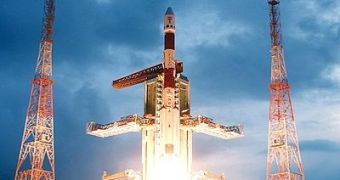The Indian Space Research Organization (ISRO) has announced that the Chandrayaan-1 lunar orbiter captured an X-ray burst coming from the Moon's surface on December 12th, which is excellent new because, theoretically, the camera that recorded the burst was not sensible enough to pick up such trace amounts of radiation. The emission lasted for about 3 seconds, but it was enough for the orbiter to determine that the surface in the area contained at least small amounts of magnesium, aluminum and silicon. The region was located near one of the landing sites of the Apollo mission.
"These data are the building blocks of the first global mineralogical map of the moon – key to understanding our only natural satellite," Detlef Koschny, who is a Chandrayaan-1 project scientist on behalf of the European Space Agency (ESA), says.
The Europeans were the ones who constructed the C1XS X-ray camera onboard the Indian lunar orbiter. Representatives from ESA maintain that they have been fortunate to pick up the emissions, especially because, at exactly the same time, a solar flare allowed the area to be lit a little more, and the observation was made possible.
"The quality of the flare signal detected from the moon clearly demonstrates that C1XS is in excellent condition and has survived the passage of Chandrayaan-1 through the Earth's radiation (or van Allen) belts with very little damage. This is excellent news for the rest of the Chandrayaan-1 mission," Aberystwyth University scientist Manuel Grande, who is the main investigator of the camera, argues.
"The instrument has exceeded expectations as to its sensitivity, and has proven by its performance that it is the most sensitive X-ray spectrometer of its kind in history," Shyama Narendranath, a Chandrayaan-1 instrument operations scientist from ISRO, adds. He explains that, out of the 11 scientific instruments the lunar orbiter has onboard, only two have been deployed thus far. As soon as the other are operational, the lunar surface will be scrutinized in far greater detail.

 14 DAY TRIAL //
14 DAY TRIAL //